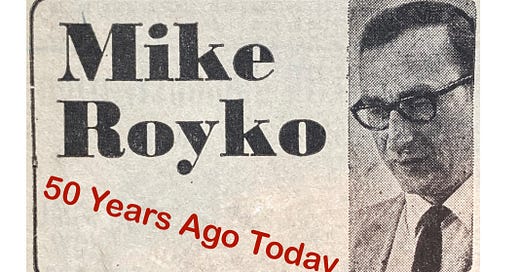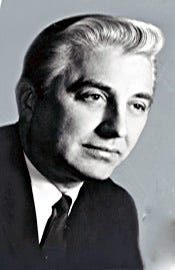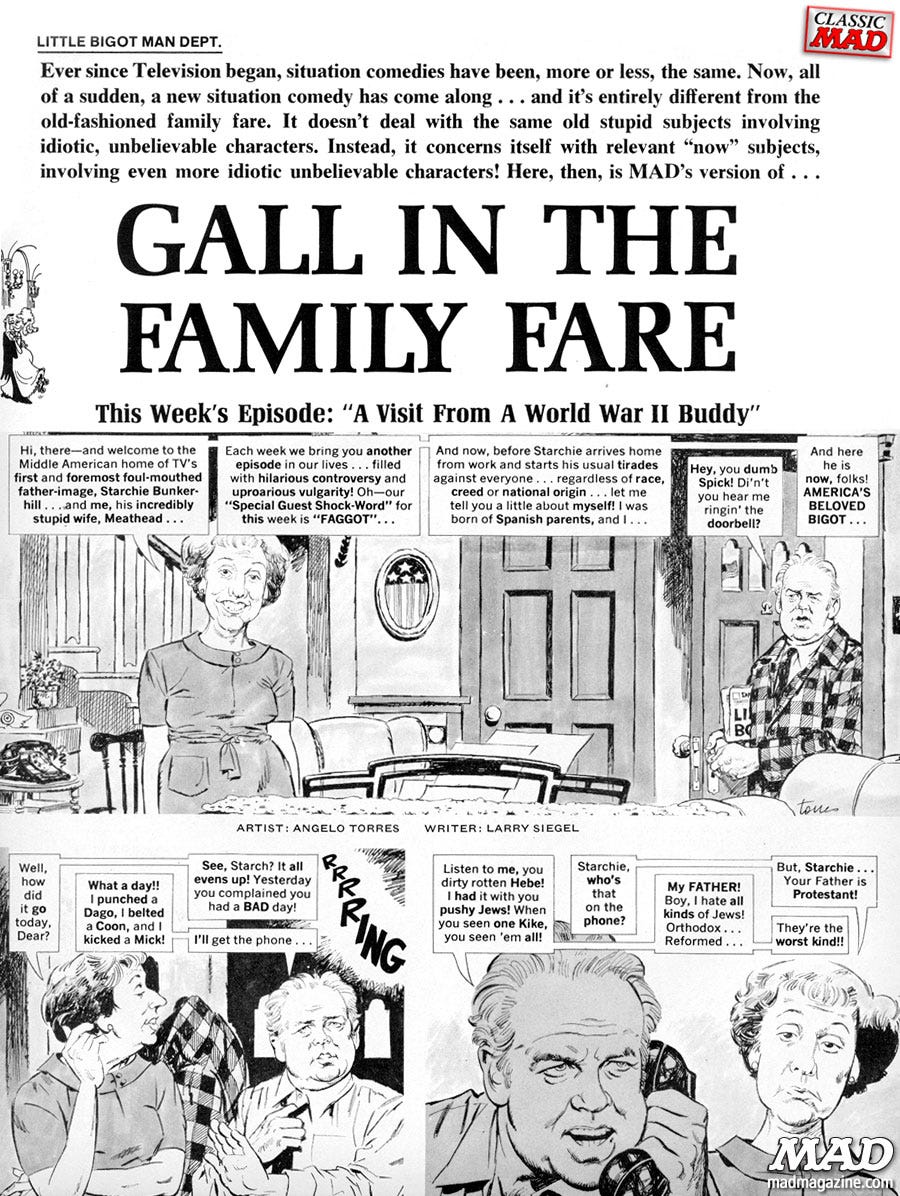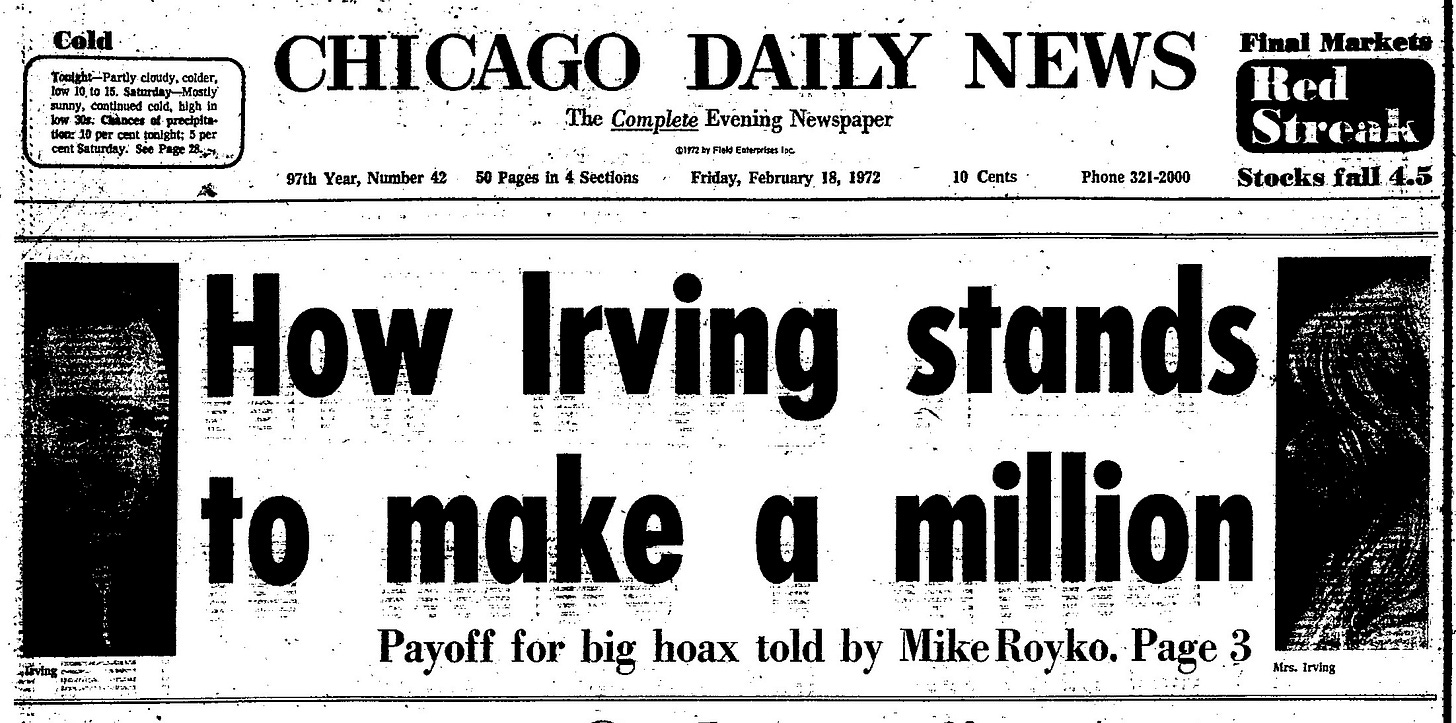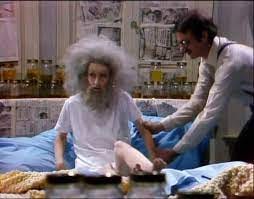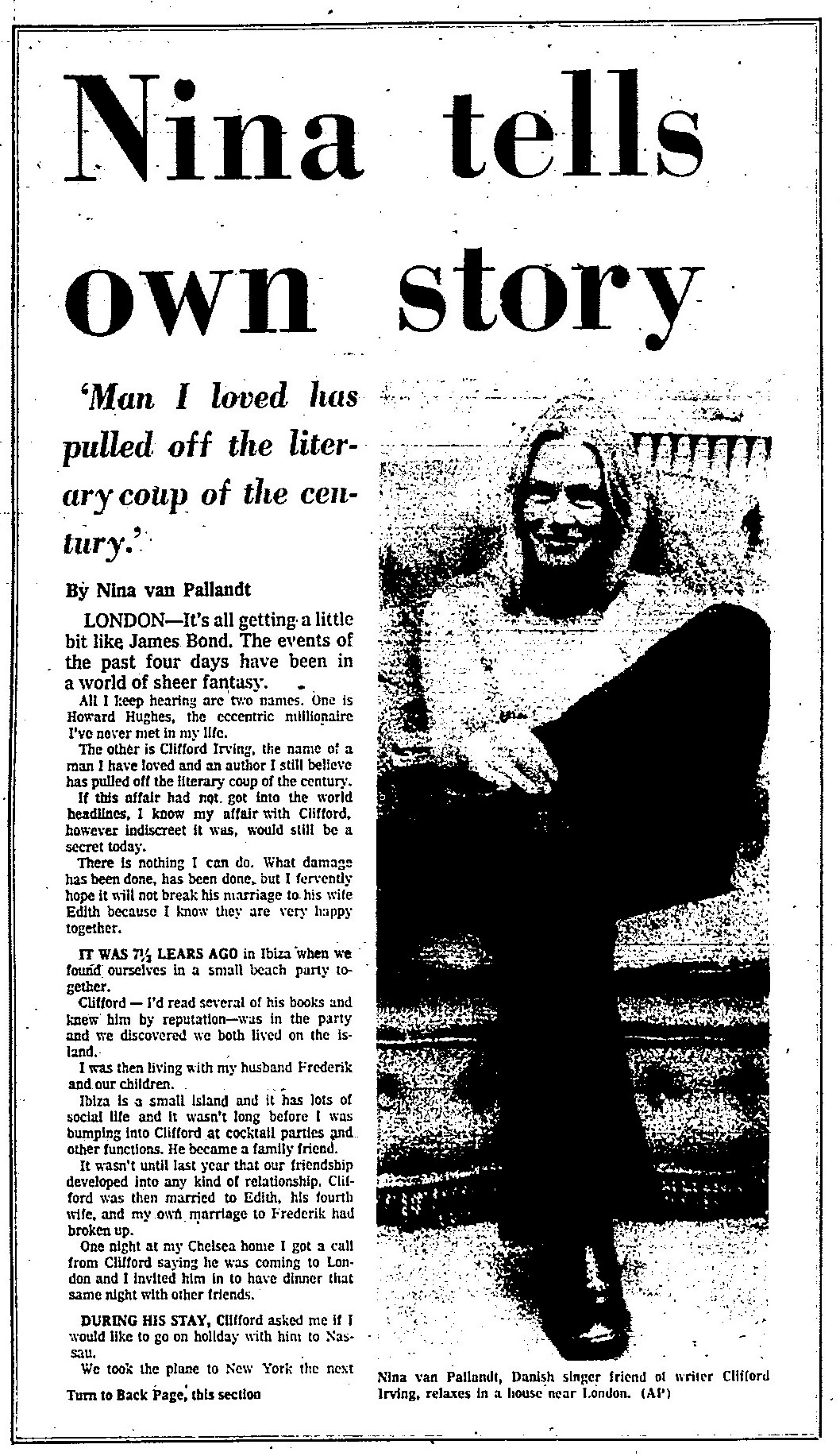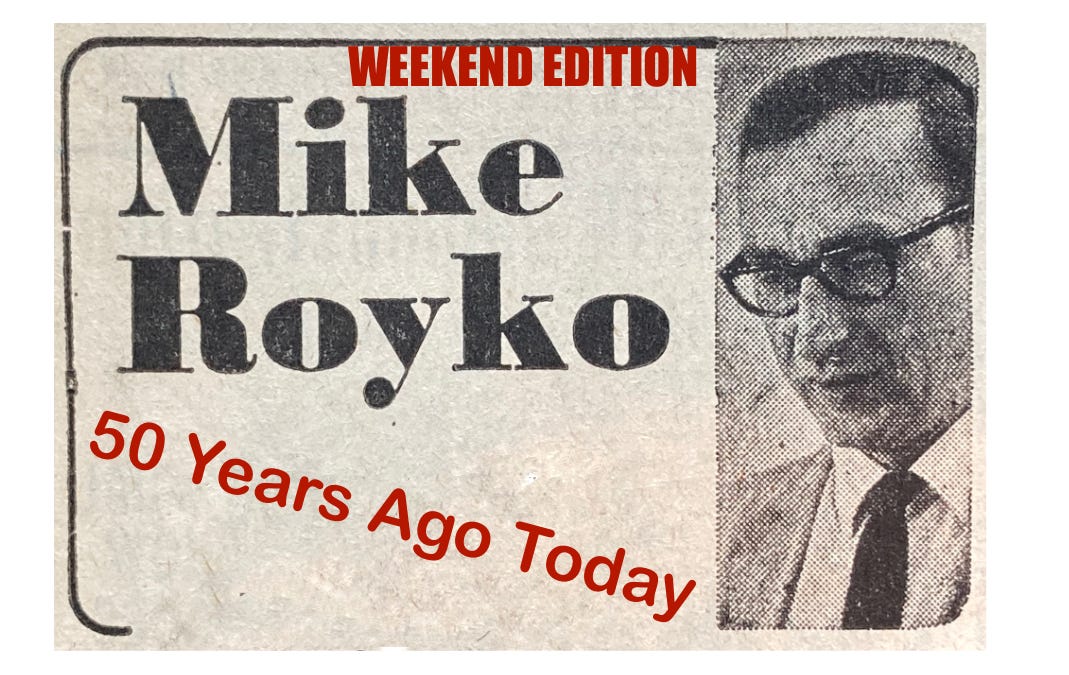Mike Royko 50 Years Ago Today: Mike punches the coffee machine
Weekly Compilation February 14-20, 1972
To access other parts of this site, click here for the Home Page.
Why do we run this separate item, Mike Royko 50 Years Ago Today? Because Steve Bertolucci, the hero of the serialized novel central to this Substack, “Roseland, Chicago: 1972,” lived in a Daily News household. The Bertolucci’s subscribed to the Daily News, and back then everybody read the paper, even kids. And if you read the Daily News, you read Mike Royko. Read the daily Royko briefing Monday-Friday on Twitter, @RoselandChi1972.
February 14, 1972
The day Slats fell for a girl
This is the first Slats column since this item began--welcome Slats!
Lots more hilarious lines than we have room for, but here's the story's skeleton:
“Valentine’s Day was never one of Slats Grobnik’s favorite events. He was just a toddler when he saw a card with a drawing of a heart, pierced by an arrow, but his reaction was: ‘Good shot.’”
Slats was indifferent to girls for so long, his relatives worried. “His father tried talking to him. He thought Slats might appreciate girls if he explained the facts of life.”
Then a new girl moved in.
“On her first day at school, Slats punched her on the arm, as he did with all newcomers. He waited for her to cry. Instead, she threw a rock at his head. Slats found her irresistible.”
But nothing Slats did could get this girl’s attention. Finally, he decided to make her a Valentine. His mom suggested he should write something romantic.
“He nodded and began writing. It came to almost six pages. He put it in an envelope, went to school, and left it on the girl’s desk. The girl read it, then showed it to the teacher, who took it to the principal, who called in a juvenile officer.
“’That’s the way my father explained it to me’ Slats said, so they let him go.”
February 15, 1972
When Abbie’s Irish Rose
Oh my, nobody can bat 1000. Sorry, but today is a rare whiff for Mike.
This doesn't even look like a Royko column, it's so dense and long. Normally, a Royko column looks elegantly spare, all one- and two-sentence paragraphs.
Come to think of it, many Royko columns are so spare, from a distance, they could be ad copy.
It's impossible to thoroughly explain or summarize this column. The set-up is that Mike has received a secret British intelligence report “on outside agitators who are helping finance the strife in Northern Ireland.”
The agitators are here in Chicago—“Rennie Daley” and “Abbie Pucinski.” FYR, Mike is conflating Mayor Daley with 60s radical Rennie Davis, and U.S. Rep. Roman Pucinski with 60s radical Abbie Hoffman. Mayor Daley and Pucinski have supposedly established covers by acting like conservative hawks.
That’s enough of the actual column, but I guess you’ll wonder what brought it on. 1972 is the worst year of the Northern Ireland “troubles”--“Bloody Sunday” occurred Jan 30, when British soldiers fired on protestors and killed 14. Mayor Daley and Roman Pucinski have been loudly railing against the British.
Mayor Daley, of course, is famously Irish. He co-chairs the Chicago Irish Relief Fund which has raised $200,000—$1.3 million in 2022 money. After Bloody Sunday, Daley called the British soldiers “storm troopers” and sent a total of $75,000 to the Catholic primate of Ireland “to bring aid to all the victims”.
Pucinski is famously Polish, but he’s running a hopeless campaign for the U.S. Senate against incumbent Sen. Charles Percy. Whipping up Irish voters must seem like a good idea. Just yesterday, the Sun-Times’ Mike Miner reported on Pucinski’s dramatic appearance before the Irish Northern Aid Committee.
Pucinski told the Irish group that the U.S. refusing to intervene in Northern Ireland was “the first time the American government has failed to respond to an act of genocide….We are seeing the systematic extermination of Irish Catholics in Northern Ireland.”
February 16, 1972
The Archie Bunker game
Mike covers the phenomenon that is All in the Family in his own special way.
FYR, All in the Family was the first of many ground-breaking sitcoms to come from producer Norman Lear, including The Jeffersons. All in the Family started in ’71 and quickly became the first show to rate #1 in the Nielson ratings five years in a row.
All in the Family got a Mad Magazine parody by December ’71, the sure signal that any piece of 60s-70s pop culture had hit the big time.
The show’s premise: Archie and Edith Bunker live in their small Queens home with adult daughter Gloria and her husband Mike Stivik, who’s still in college. Archie is prejudiced against everyone. Everyone. Mike is Polish, which means Archie calls him a “dumb Polack” and most famously, “meathead.”
In one of my favorite episodes (Season 1, Episode 3), Archie is in a small car accident and gets the idea to collect an insurance settlement, though he’s fine. He calls a law firm that sounds Jewish, and they send a lawyer. When Archie discovers the lawyer is not Jewish, he kicks the lawyer out yelling, “Send me a Jew!”
All in the Family was hilarious because 1) it just was and 2) the joke was always on Archie.

That’s why Mike begins today’s column this way: “Archie Bunker has become America’s favorite bigot, although George Wallace’s fans might protest.
“There’s hardly anyone who Archie doesn’t dislike for reasons of race, religion or nationality.
“But what about Archie himself? Just what is his ethnic background?
“The creators of ‘All In The Family’ have wisely left this a question mark.”
Mike asks random Chicagoans what their ethnicity is, and what they think Archie is. The answers are enlightening.
A sampling:
“Jack Flanagan, salesman (Irish): ‘The way he kicks around the language, I’d say he’s Polish. The name Bunker could be shortened from something longer, couldn’t it?’
“Robert Palomaki, a postal worker (Finnish): ‘I think he’s German because German people have a tendency to think they’re better than everybody.’”
Mike claims he spoke to two politicians who wish to remain anonymous. One is Polish and says, “Frankly, I don’t like the show because some people think the Bunker character is Polish. I don’t know why, because it’s obvious to me that he’s Irish.”
The other politician is Irish. He says, “If it wasn’t for the name Bunker, I’d say he’s probably Polish.”
Mike comes to two conclusions:
“1) In Chicago, everybody thinks the other guy is an Archie Bunker. 2) They’re probably right.”
February 17, 1972
Women’s Lib: another side
Mike uses recent news from California as an excuse to let some deputy sheriffs tell funny stories about tracking down men who owe alimony and child support.
“A few days ago, two California women turned down alimony because they believe in Women’s Lib. They said alimony would prevent them from being truly independent and equal. Their ex-husbands didn’t argue.”
Mike speaks with several deputies charged with hunting down ex-husbands who also don’t believe in alimony. The stories definitely follow a pattern.
Deputy Barry Levy recalls looking for one guy, John, at his mother’s two-flat. She says he isn’t there. “Then we go up to the second floor, a vacant flat. I open a cabinet under the kitchen sink. There is John.”
Another time, Deputy Levy searched the ex-husband’s girlfriend’s apartment. She says he’s not there. Deputy Levy notices the bathtub is piled with clothes. He turns on the water, and the ex-husband jumps out.
“As I put the cuffs on him, I asked him what he was doing there in the bathtub. He said: ‘I was looking for a clean pair of socks.’”
February 18, 1972
Cliff Irving’s first million
Mike makes the front page with his analysis of why novelist Cliff Irving will probably end up making a million bucks, even though he got caught faking an autobiography of the #1 eccentric billionaire of the 20th century, Howard Hughes.
The now canceled hoax autobiography is the sensational book that portrayed Hughes as completely bonkers, with finger and toe nails nine inches long, thus beginning decades of the crazy disheveled Howard Hughes meme, done most hilariously on Saturday Night Live with Laraine Newman playing Hughes.
Back on January 10, Hughes surfaced from seclusion in the Bahamas for the first time in 15 years to repudiate Irving’s “autobiography” of him, already slated for publication by McGraw-Hill with splashy excerpts in Life Magazine. Hughes held a press conference by telephone to deny he had anything to do with Irving’s book.
Hughes’ wealth in 1972 was estimated at $2.2 billion--which today would be $13.5 billion. To give you some context, since tech billionaires have changed the playing field, when Fortune magazine rated the richest Americans in 1957, J.P. Getty was #1 with $1 billion. Howard Hughes was eight rich people behind in the $200-$400 million category. So Hughes wasn’t the richest, but he was quite rich. And he was the craziest. No contest there.
Quick recap on the Irving autobiography hoax affair: After Hughes called the book a hoax, eventually publisher McGraw-Hill looked into the checks they’d written, which were deposited by a “H. Hughes” in a Swiss bank. It turned out they were signed and deposited by a “Helga Hughes”--whose passport had the same ID number as Clifford Irving’s wife, Edith.
Meanwhile, Irving claimed to have met with Hughes on several occasions for long interviews, once during a trip to Mexico while he carried on an affair with Danish singer Nina von Pallandt. Pallandt has told everybody that Irving was never out of her sight long enough to meet with anybody, but she still thinks he really wrote an autobiography of Howard Hughes.
Another Irving paramour who somehow figures in here is Florida scuba diver Anne Baxter, who had a tryst with Irving in St. Croix.
As we rejoin the story on Feb. 18, 1972, Pallandt and Baxter have just testified before a grand jury in New York; the U.S. just arrested Mrs. Irving; and Switzerland is requesting Mrs. Irving’s extradition.
Mike’s column today is a good one, sure, but the Daily News just likes to put this nutty scandal on the front page. On this 18th day of February, the Irvings have NOT been on the front page of the Daily News only three times this month.
Most Irving stories in the February Daily News are the top headline, across all columns, either immediately above or below the masthead.
On February 9, the Daily News used about a quarter of the front page for a first-person article by Nina von Pallandt. It’s a quasi-diary entry headlined “Nina’s own story ‘Man I loved has pulled off the literary coup of the century’”. Sampling:
“It’s all getting a little bit like James Bond. The events of the past four days have been a world of sheer fantasy,” reads the lede.
“All I keep hearing are two names. One is Howard Hughes, the eccentric millionaire I’ve never met in my life. The other is Clifford Irving, the name of the man I have loved and an author I still believe has pulled off the literary coup of the century.”
Pallandt writes that she’s sorry the secret affair became public, she hopes it won’t break up Clifford Irving’s marriage, and how she met him 7 ½ years ago at a small beach party on the island of Ibiza. Then last year, Irving was in London and she invited him to dinner at her home in Chelsea. Next, he invited her to “go on holiday with him to Nassau.” All that, before the jump to an inside page.
So, the Daily News is not above splashing some gossip on the front page. That’s why Mike gets a huge plug on the front page, not because he has an actual scoop.
Today, Mike weighs in on the running Howard Hughes hoax scandal.
“Reliable sources have told me that Clifford Irving has turned down a publisher who offered him a $250,000 advance to write a book about his great hoax,” Mike starts. That’s $1,687,500 in 2022 money.
But, Mike says, Irving is waiting because he expects to collect $500,000. He’ll probably get it.
“And that is not all he can expect. His story--with its intrigue, beautiful blonds and international setting--is considered a cinch to be made into a movie.”
Irving could make another $200,000 off the movie. The book is expected to sell well, which would earn him royalties beyond his advance--about $1.25 per hard cover. Then there’s the paperback, plus serialization rights in magazines and newspapers. Irving’s old books will be re-issued, suddenly more popular than ever. He’ll be able to charge $1,000 or more on the speaking circuit.
Remember, multiply all the dollars here by $6.75 to get 2022 values.
“Ah, but you ask how he will be able to write the book, and enjoy the money, if he is tucked away in a prison cell,” Mike notes. “For an answer to that problem, I give you the opinion of one of the city’s leading criminal lawyers:
“‘On the basis of what I’ve read, I don’t think they can get him on anything unless Howard Hughes is willing to come to court and testify.’”
And Howard Hughes is famous for paying millions in civil cases rather than going to court.
“You watch,” the lawyer tells Mike. “Irving is going to walk out of this one free as can be.”
Mike’s as-always snappy ending:
“People keep asking: How did Clifford Irving ever think he could get away with it?
Because he is getting away with it.”
February 19-20, 1972
As we here all know, weekends could be sad for a Daily News family because Mike Royko wasn’t in the Daily News’ single weekend edition. So we look for Mike elsewhere on weekends.
And now for something completely different: Mike makes an appearance in the Chicago Journalism Review, a wonderful but unfortunately short-lived magazine (1968-1975) started by Chicago reporters who were disappointed and/or disgusted by local coverage of the 1968 Democratic convention and police riot. Hank De Zutter was the first editor, with associate editors Christopher Chandler, Ron Dorfman and Ken Pierce.
CJR boasted some absolutely iconic covers by legendary Sun-Times cartoonist Bill Mauldin, creator of the Pulitzer Prize-winning World War II Willie and Joe cartoons chronicling the life of ordinary combat soldiers. Here’s Mauldin’s cover for CJR’s January 1969 issue featuring more on the 1968 convention coverage:
CJR put out a seminal issue on the predawn 1969 State’s Attorney police raid that killed Black Panthers Fred Hampton and Mark Clark, now available online. That’s another, even more amazing Mauldin cover. I know this isn’t directly about Mike Royko, but he was friends with Mauldin so there’s that connection. I’ll do a post on CJR. But anyone interested enough to read about Mike Royko will want to see this too:
CJR analyzed and critiqued all facets of local newspaper reporting, but it wasn’t above also running a two-page local media “GOSSIP” column by Leonard Aronson. Aronson’s GOSSIP is an invaluable chronicle of the Chicago journalism scene in those years.
Here now, from the April 1973 CJR, a Royko anecdote from Aronson’s GOSSIP column. This morsel follows a short bit about Sun-Times columnist Tom Fitzpatrick. In this item, Fitzpatrick apparently comes close to getting into a fistfight with either the Daily News’ Mort Edelstein or Mike Royko or both of them.
Quick background: After Field Enterprises bought the Daily News, the News moved into the then-new Sun-Times building on the north bank of the Chicago River at Wabash—now Trump Tower. Until the News folded, it was the Sun-Times and Daily News building. The city newsrooms for the two papers shared one big floor of the building, split down the middle by a wire room. John McCormick, who would go on to a distinguished career with Newsweek and then the Tribune, retiring as editorial page editor recently, spent some years first at the Daily News as a night copy boy during college. He generously talked with me for the Notes chapter coming this week on Chicago papers, and says the Sun-Times newsroom was on the west end of the floor. So picture Fitzpatrick storming east to confront his Daily News rivals. I don’t have a good picture of Fitzpatrick at this time, due to the vagaries of microfilm, and I’m not seeing any on the internet so far.
I wonder if this is the coffee machine Mike wrote about in his November 15, 1971 column, “How to kick a machine”? In that column, Mike was standing in line at a coffee machine when the guy in front of him put in a dime, but didn’t get any coffee.
The guy is dejected and begins to walk away, but Mike advises him to kick the machine. Why? “You’ll feel better,” Mike says. Mike shows him the best way to kick the machine, so as not to hurt your foot.
The next guy in line shows everybody the best way to hit the machine.
Now another guy takes a chance and loses his own dime, but he refuses to attack the machine. “It’s only a dime,” he says and walks off. Mike disagrees.
“Only a dime? There are 200 million Americans. If each of us is taken for a dime, that adds up to $20 million. And it has to be more, now that machines have appeared in every factory and office, depot, and terminal.”
Soon everybody will have been taken for a $1, and that’s $200 million, he figures. “The empty cup is a giant industry,” Mike realizes. Nothing will get your dime back, so “The answer is to kick and punch them. If you are old, lame or female, bring a hammer to work with you, or an ax.”
By the way, this feature is no substitute for reading Mike’s full columns. He’s best appreciated in the clear, concise, unbroken original version. Mike already trimmed the verbal fat, so he doesn’t need to be summarized Reader’s Digest-style, either. Our purpose here is to give you some good quotes from the original columns, but especially to give the historic and pop culture context that Mike’s original readers brought to his work. You can’t get the inside jokes if you don’t know the references. Plus, many columns didn’t make it into the collections, so unless you dive into microfilm, there are some columns covered here you will never read elsewhere. If you don’t own any of Mike’s books, maybe start with “One More Time,” a selection covering Mike’s entire career and including a foreword by Studs Terkel and commentaries by Lois Wille.
Do you dig spending some time in 1972? If you came to MIKE ROYKO 50 YEARS AGO TODAY from social media, you may not know it’s part of the book being serialized here, one chapter per month: “Roseland, Chicago: 1972.” It’s the story of Steve Bertolucci, 10-year-old Roselander in 1972, and what becomes of him. Check it out here.
To get the weekly compilation of MIKE ROYKO 50 YEARS AGO TODAY in your mailbox along with THIS CRAZY DAY IN 1972 and new chapters of the book, SUBSCRIBE FOR FREE!

